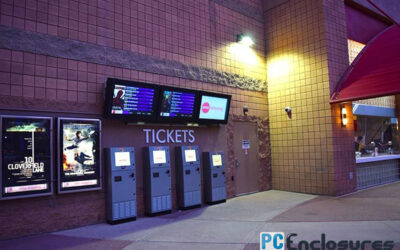When it comes to the expansive world of healthcare, regulations and standards are important to keeping patients safe and protected while getting the care they need. These same standards also make healthcare providers’ lives easier by streamlining the care process and ensuring safety for their patients. But how can you know which standards are required of your TV enclosures and other ligature-resistant items? In this article, we break down the in’s and out’s of behavioral healthcare related standards and how they impact the use of ligature-resistant TV enclosure products in behavioral healthcare facilities.
Who Makes Healthcare Standards?
In the United States, there are different levels of regulation, including federal, state, local, as well as the private, or “third-party” regulations. All of these different parties work together to create specific regulations and standards and do so in a “checks-and-balances” style, ensuring input from each group and avoiding the possibility of any group becoming more powerful than the other. There is no single governing body when it comes to the creation or enforcing of all standards, so independent, third-party agencies and organizations often develop their own guidelines and standards based on practical, evidence-based studies that apply to specific areas of healthcare. One of the most popular standards-setting and accrediting agencies is The Joint Commission.
What Is The Joint Commission?
Established in 1951, The Joint Commission (TJC) is the largest standards-setting and accrediting organization in health care within the United States. The Joint Commission is a private, not-for-profit organization that specializes in creating and setting standards as well as accrediting hospitals and labs that follow their guidelines. Because The Joint Commission is a private organization, their own standards are not necessarily law, but if you seek an accreditation from TJC, you must comply with their standards to earn and keep that accreditation. Many hospitals seek accreditation from TJC because TJC accredited hospitals are eligible to receive federal reimbursements for Medicare/Medicaid charges. TJC only accredits healthcare organizations and labs, not individual products. This means that TJC won’t accredit any individual products or items that go into a healthcare setting, rather they accredit a healthcare organization as a whole by its processes, setting, and practices. The Joint Commission standards are only accessible through purchasing their guidelines book, but there are other private groups who specialize in consulting concerning The Joint Commission standards; Enter BHFC Design.
What is the BHFC Design Guide?
BHFC Design (Behavioral Health Facility Consulting) is an independent group specializing in design consultation for behavioral healthcare facilities aiming to become Joint Commission accredited. BHFC has created the BHFC Design Guide, a consultation guidebook written to help designers and contractors create Joint Commission accreditation compliant spaces in behavioral health facilities. This guide, developed in collaboration with experts and industry professionals, outlines in-depth and specific design principles and specifications to create spaces that prioritize safety, therapeutic efficacy, and patient well-being. The BHFC Design Guide is one of the closest looks at The Joint Commission’s working standards without paying for their standards book or going through the accreditation process. So how do we apply the BHFC Design Guide recommendations to our Anti-Ligature TV Enclosure designs?
How Does This Apply to Ligature-Resistant Design in TV Enclosures?
One critical aspect of behavioral healthcare design is addressing ligature risks, especially in spaces where patients may be vulnerable. The application of ligature-resistant design principles, as guided by The Joint Commission’s standards and BHFC Design Guide recommendations, extends to various elements within a facility, including TV enclosures. The BHFC Design Guide has a specific section on TV enclosures which says:
“Television Set Enclosures (Typically Levels II and Level III only) –
Television sets should not be mounted on walls using exposed brackets because of the ligature risk this presents. Rather, all TV sets should be installed in built-in TV or media centers or manufactured tamper-resistant covers with sloped tops. Some facilities prefer to also have an isolation switch that staff can control.
For maximum safety, the electrical outlet and cable TV outlet should be located inside the cover to keep the wires and cables away from patients.”
All our Anti Ligature TV Enclosures are compliant with all these specific recommendations, including:
- A 15º sloped top
- Tamper proof keyed locks
- Shatter resistant polycarbonate windows
- A flush wall fit
- Wiring and mounting hidden within the enclosure
Our engineers have paid special attention to creating a smooth, sleek design while avoiding ligature points and sharp edges to prioritize safety within behavioral health facilities. When applying these design recommendations to our TV enclosures, healthcare facilities can confidently install a PC Enclosures Ligature-Resistant TV Enclosure and know that they will pass Joint Commission accreditation and keep their facilities and patients safe.
In Conclusion:
The Joint Commission and their accreditation process is typically a painful and worrisome thought for healthcare organizations, especially since their standards are not easily accessible or digestible. The BHFC Design Guide can help engineers and designers get an idea of what The Joint Commission will be looking for during the accreditation process and guide them to create safe, integrated spaces for behavioral health patients.




